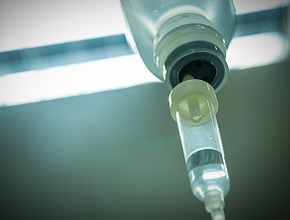Dr Fayez Alshamsi, assistant professor of internal medicine at United Arab Emirates University and coauthor of Surviving Sepsis Campaign 2021 guidelines, joins Dr Roman Jaeschke in the latest McMaster Perspective episode to elucidate recommendations pertaining to the use of capillary refill time and lactate levels in patients with sepsis.
For part 2 of the interview, click here.
Roman Jaeschke, MD, MSc: Good morning. Welcome to another edition of McMaster Perspective. We have a whole group of people associated with McMaster [University], who participated in the current edition of the Surviving Sepsis Campaign. The first [one] of them is Professor Alshamsi, who was one of the methodologists working on the most interesting areas of the guidelines. Professor Alshamsi, why don’t you introduce yourself? Tell us where you work and what was your area of Surviving Sepsis Campaign involvement.
Fayez Alshamsi, MD: Thank you, Professor Jaeschke, for the invitation and the introduction. My name, as you said, is Fayez Alshamsi. I am an internist and intensivist. I’m also an assistant professor of internal medicine at United Arab Emirates University. I work in the intensive care unit in the affiliated hospital. My involvement with the guidelines was as a methodologist in the screening and early resuscitation section of the guidelines, as the methodologist for that subgroup.
Roman Jaeschke: Well, thank you. I read the guidelines in detail by now and I enjoy them as a practicing intensivist. I wonder if we could go over a few recommendations? The first one was dealing with screening for sepsis. What’s the message of this recommendation to practicing clinicians?
Fayez Alshamsi: The message is, basically, [that] if you see anyone—whether they’re inpatients or [in] the emergency department—with any kind of any physiological derangement, then [you should] have a high degree of suspicion and consider sepsis, even if the signs [are] not typical, like fever or so on. [It] could be just a slightly altered level of consciousness or slightly not feeling well in terms of nausea, vomiting, and breathing... So, keep sepsis in the back of your mind, especially if the patients also have other higher-risk [factors for sepsis] like immune compromise, have comorbidities, and so on. So, the message is: Keep it in your mind. Early identification will definitely lead you to the right path, and starting the management, as you know, […] it is… important to start early.
Roman Jaeschke: So, keep it in mind, have your eyes open, especially in undifferentiated situations. OK. The other [thing] that I found a little controversial is the whole issue of what we used to do for screening, among other things, which was systemic inflammatory response syndrome (SIRS) and quick Sepsis-related Organ Failure Assessment (qSOFA), which came a little later and which was a combination of rapid respiration, decreased blood pressure, and a changed level of consciousness. Could you elaborate on those? There was a surprising suggestion not to use qSOFA.
Fayez Alshamsi: Correct. So, this was also very interesting, and it went through a lot of deliberation during... preparing the guidelines. If you look at the wording of the recommendation, it says we suggest not using it, or we strongly recommend not using it as a single tool to screen for sepsis, compared with others. It is good that it can pick up many patients with sepsis, but this also can miss a patient with sepsis, and then the concern is [that] you might also be late in picking [up] some of patients with sepsis. So, that’s why the recommendation came out strongly against it.
Roman Jaeschke: OK, well, it sounds like by the time you hit qSOFA, you’re pretty sick—you’re hypotensive or confused and so forth. So, in the course of sepsis, it’s pretty late, and that’s probably also what you are suggesting even at earlier stages. Now, [another controversy]—looking at the last 3 reiterations of the Surviving Sepsis Campaign—is the use of lactate [measurement]. You recommended it very early, I think it’s the third recommendation. Could you expand on the use of lactate [measurement] in this setting?
Fayez Alshamsi: Correct. As you know, the definition of sepsis is any kind of organ dysfunction related to a suspected or proven infection. And one of the things that can be an early sensitive measurement of organ hypoperfusion can be lactates. So, it can heighten even more awareness about sepsis and maybe grab your attention more to that patient. However, the recommendation was a weak recommendation, meaning that we do not suggest that you should not pay attention if the lactate [level is] normal—the patient has other things to be considered. So, it’s [recommended] just as [a tool] heightening your kind of instinct and [facilitating] looking for sepsis even more.
Roman Jaeschke: So, it will be a red flag if it’s elevated, obviously. Again, historically looking, the role of lactate [levels] is becoming quite important. I believe you were also involved in [the guidelines on] early resuscitation, not only [on] screening, and the role of lactates there also seems to be quite prominent, correct?
Fayez Alshamsi: Correct. But this time, again, there was a lot of deliberation around what’s the value of the decrement of lactate [levels], [whether] we should aim at normalizing it or we should aim to decrease lactate [levels], considering that now we know that not all lactate [elevations indicate] hypoperfusion, and some of the interventions we do in the patients, like [the administration of] vasoactive drugs and so on, can in fact increase the lactate [levels]. Therefore, the consensus was that we suggest you aim for a decrement of the lactate [level], among other measures, obviously, of targets of resuscitation, for example, improving perfusion by [improving] examination of capillary refill [time] or by urine output, for example; other parameters that overall show that you are moving the resuscitation efforts in the right direction.
Roman Jaeschke: OK, so lactate [levels] is one of them [measures]. There was a statement on using a dynamic measure rather than a static [one]. Could you translate it for the rest of us? What is meant under those and what is practical here?
Fayez Alshamsi: So, I’ll give you an example… As a trainee […], I remember, [when] memorizing the sepsis guidelines, [it was] central venous pressure (CVP) of 8 to 12 [mm Hg], then [in case of] any hypotension always just fluids, fluids, fluids... Even until recently, any hypotension is fluids, fluids, fluids... Then we found out that, in fact, we reach a level where you can cause harm to the patient when the patient becomes volume unresponsive. So, then there were these new dynamic measures [such] as checking the stroke volume variation or pulse pressure variation, or with the passive leg raising [test], for example. So, these are bedside techniques that will help you identify the patients who will benefit from the fluids rather than harm them blindly with giving fluids and causing harm. Their availability can be a problem. We know that, for example, we might need to do an ultrasound to check the cardiac output, or we will need to have the arterial line with a monitor that’s able to [measure] the pulse pressure variation, the patient has to be in sinus rhythm, they have to be on a specific amount of tidal volume, there should be no spontaneous breathing, for example, for some of those measurements. So, we suggest using them rather than blindly targeting 8 to 12 [mm Hg] of CVP, for example, to guide your fluid resuscitation and to decide...
Roman Jaeschke: You mentioned, in the same area, the capillary refill [time]. Do you put it in the same category of dynamic indices?
Fayez Alshamsi: I would say yes. This is supported by the ANDROMEDA trial, as you know. These patients were randomized to either checking the lactate [level] or being examined every 30 minutes by the capillary refill [time]. I think that capillary refill [time] is a very cheap way of checking whether the perfusion is improving, and what we like about it [is that] it’s gonna bring you closer to the patients. And it’s a good message to bring to clinicians that getting closer to the patient is always right, and you will be surprised by how many things you can pick up by just examining your patient. So, the ANDROMEDA trial showed that the capillary refill [time is] a very easy test. You can also train bedside nurses to do it, so it gives valuable information. And one thing in these guidelines and also previous guidelines... There is also a focus on the low- and middle-income countries in the world and the availability of resources. In fact, one of our panel members was our kind of representative for this group of people around the world. And I cannot think of any better way of making sepsis management around the world cheaply available than the capillary refill [time] test.
Roman Jaeschke: Well, I remember... You are too young to remember, but there was a time when we were using Swan-Ganz catheters in almost everybody, and then [there] came a paper saying that we can manage them [patients] equally well with capillary refill [time] and, frankly, jugular venous pressure. So, in the meantime, it sounds like it [capillary refill time] is as good as lactate [levels]. Maybe that would be our parameter of choice.
 English
English
 Español
Español
 українська
українська











